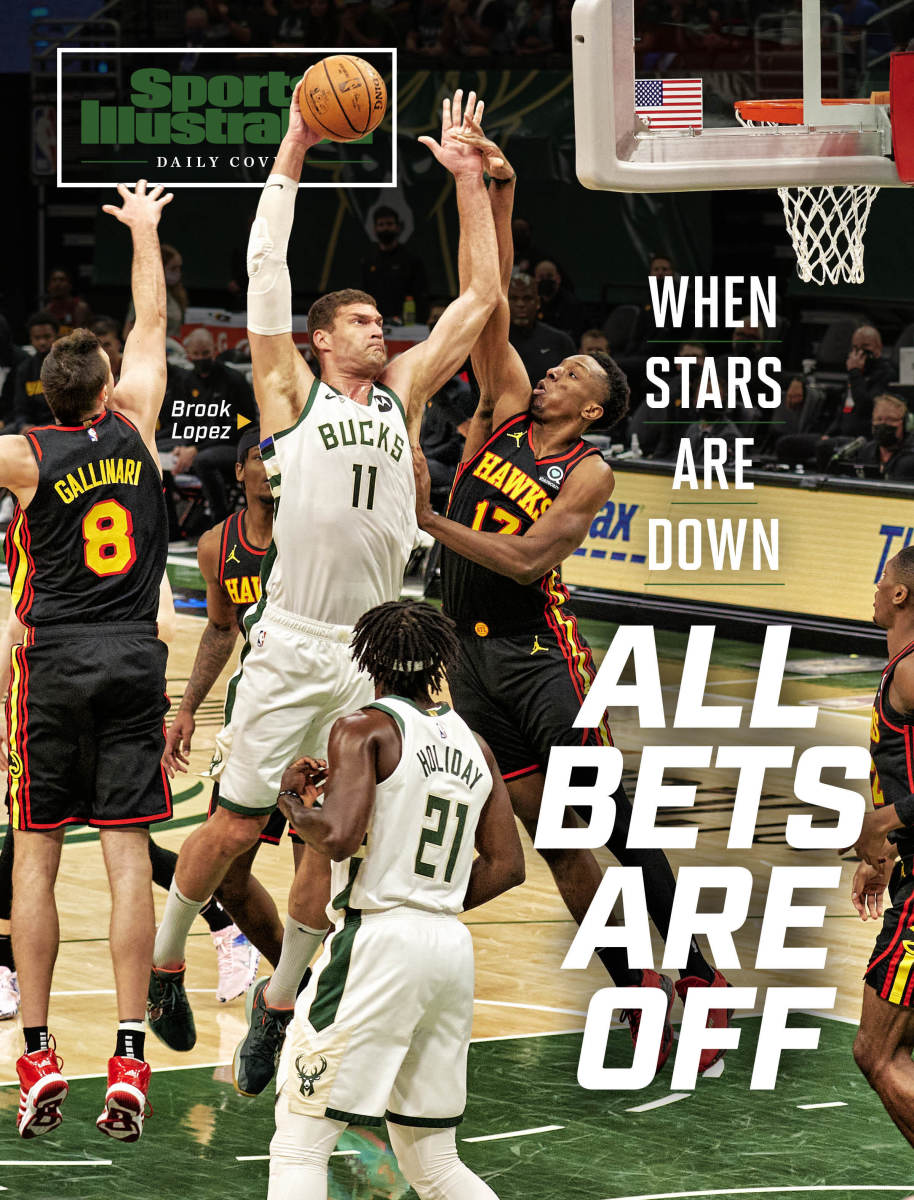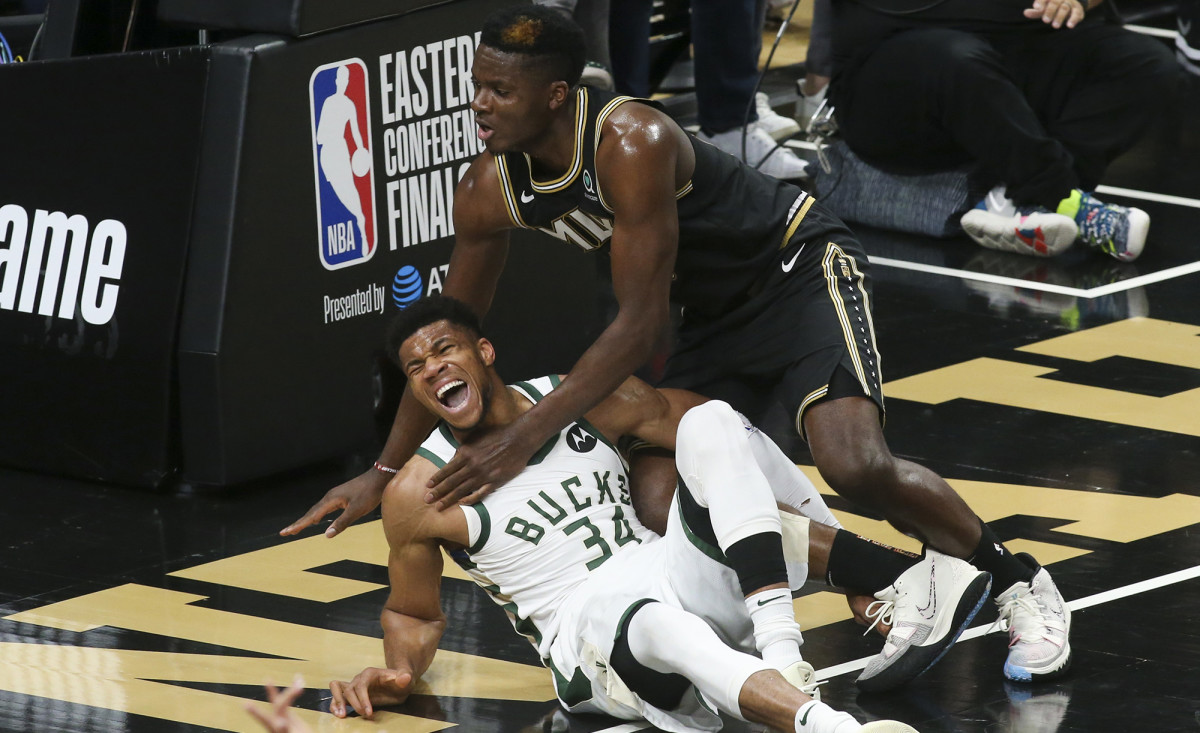How Not to Freak Out With Your Freak Out
There’s been an inordinate amount of talk about injuries during this NBA playoffs, and understandably so.
Never before have we had so many All-Stars miss time during the most important stretch of the year. And perhaps because of that, we’ll not only see a new champion crowned in a few weeks, but we’ll also see a franchise that hasn’t hoisted the hardware in at least 50 years.
But in examining those injuries—either to bemoan them and the toll they’ve taken on the sport, or to view them through a glass-half-full lens and embrace the new stars that have emerged as a result—there is one thing that’s being overlooked somehow. In several cases this postseason, the absence of a star hasn’t always hurt the shorthanded club the way one might expect.

Generally speaking, if a team loses its star player—particularly in basketball, where that player’s impact is arguably greater than in any sport due to how few players are on the court—the expectation is that his or her team will take a hit. Scoring becomes a far greater grind, especially against playoff defenses, which in turn will lock down and make life tougher on opposing role players who can’t get open looks as easily.
Think back two years ago, for instance, when Kevin Durant and Klay Thompson each went down with catastrophic leg injuries, and the Raptors responded by swarming Golden State’s Stephen Curry. On the strength of Kawhi Leonard’s broad shoulders, Toronto marched to its first NBA championship.
For whatever reason, this season’s injury-marred postseason hasn’t been nearly as straightforward.
If we are to assume that a team will be weakened and likely without one of its best performers, we’ve been proven wrong time and again throughout these playoffs. The Finals-bound Suns won Games 1 and 2 without Chris Paul in their now-finished series against the Clippers. Durant and the Nets, with a highly hobbled James Harden and without Kyrie Irving for the final three games, very nearly took out the Milwaukee Bucks in the East semis before losing the series in seven. The Hawks, seemingly left for dead earlier this week after star guard Trae Young suffered a bone bruise in his right foot after tripping on an official’s foot in Game 3, then came out firing on all cylinders and easily won Game 4, despite Young’s inability to play. (The reason for the blowout was obviously a bit more complicated than that, of course, which we’ll get to in a moment.)
Perhaps the craziest turn of events in these playoffs, though, happened in the second round, after the Clippers lost Kawhi Leonard to a knee injury after Game 4. Their series with top-seeded Utah was tied, 2–2, and news of Leonard’s injury threw things into flux. Some oddsbooks initially pulled the series off the board, before labeling the Jazz an even greater favorite to win it once Leonard was ruled out.
But then the Clippers won the final two games of the series without their first team All-NBA forward, knocking out Utah before arguably outplaying Phoenix through the first five games of the conference finals (outscoring the Suns by 11 points in that span) without Leonard.
Playoff teams missing their regular-season scoring leader have gone an impressive 8–8 this postseason, one of the better marks in recent memory, according to data from Stats Perform. Both 2018 and 2019 saw better records in such situations, as Boston won 11 contests without Irving in the former, while Golden State won six in the latter without Durant. But this postseason has been more spread out. A record-high five different clubs have won a playoff game without their leading scorer suiting up, including three of the four semifinalists.

Then again, with such a massive run of injuries, some analysts are taking the events of this postseason with an enormous grain of salt. “I mean, with a lot of these games, a team without one of their stars is beating another team that’s without a star,” says Dave Mason, the sportsbook brand manager for BetOnline.ag. “Some of these injuries are basically canceling each other out.”
Thursday night’s pivotal Game 5 between the Hawks and Bucks was a perfect example. Young and Milwaukee’s Giannis Antetokounmpo (hyperextended left knee) were unable to play, forcing their supporting casts to duke it out.
The Bucks won behind a balanced showing from their starters, including usual reserve Bobby Portis (22 points and eight boards), who replaced the two-time MVP in the lineup. But no one shined brighter than center Brook Lopez, who turned back the clock to his New Jersey days and totally abandoned his three-point shooting stroke to aggressively attack the paint in Antetokounmpo’s absence. Lopez dazzled with an array of hook shots and dunks, finishing with a game-high 33 points.
Usually, Lopez stands along the arc with two or three other teammates, who seek to keep open the lane for Antetokounmpo’s acrobatic spins and Eurosteps. Without their superstar, though, Lopez’s play in the paint seemed to repeatedly catch the Hawks off guard. The former All-Star also had seven rebounds and four blocks on the night.
It was far from the first time we’ve seen a club overhaul its style of play while shorthanded this postseason. Clippers coach Tyronn Lue essentially glued his centers to the bench late in the second-round series against the Jazz after Leonard went down with things squared at two games apiece. The move forced three-time Defensive Player of the Year Rudy Gobert to both defend the paint—Utah’s wing defenders played poorly, and allowed free entry into that area—and guard the Clips along the arc. Often stuck in no-man’s land, Gobert couldn’t do both. Los Angeles caught fire from deep and won in six. (Interestingly, the Clippers won Game 5 at Phoenix, too, when seven-footer Ivica Zubac was forced to sit with a knee injury.)

“I think at times teams come into a series thinking they want to take away a team’s best player,” Lue said this week. “But then when that guy’s out, the [offensive] team ends up playing a different style of basketball. And the defense can’t really key in one or two guys anymore.”
A team—or even just an individual player—getting hot from deep can swing a contest quickly and give a disadvantaged club a leg up, obviously. Leonard’s absence gave guard Reggie Jackson a chance to step up and have a breakout postseason. After an array of injuries and being out of the Clippers’ rotation at times the past two seasons, Jackson loudly stepped into the role of a second star in the conference finals.
But the Clippers ultimately found themselves the victims of a superb shorthanded performance, too.
It would have been natural to think the Suns would be weaker to start the conference finals without Paul, who tested positive for COVID-19. But after Phoenix took Game 1, the Suns then snatched Game 2 on an incredible lob play in the final second of the contest. Not to be overlooked in that showing: a career-best 29-point, nine-assist, no-turnover outing from Suns guard Cam Payne, whose NBA-career obituary was all but written up last year.
In filling in for Paul, the speedy Payne ran circles around Los Angeles in Game 2. His uptempo style left the short-rest Clippers breathless that night; a smart approach to use against a team that hadn’t enjoyed much rest coming off a long series. And a far different approach than the Suns likely would have taken with the 36-year-old Paul, who’s more deliberate and generally plays at a much slower pace.
Of course this shorthanded, underdog notion has been talked about before. Years ago, Bill Simmons riffed on the idea from friend Dave Cirilli, calling it the Ewing Theory, which posits that teams get better after losing a star player who drew the lion’s share of the attention. (This name stuck for Simmons after Ewing’s Knicks advanced past the Pacers without him to reach the 1999 NBA Finals after the Hall of Famer suffered an Achilles injury.)
But few, if any, people truly believe a team gets better in those circumstances. The Bucks can get a stellar performance here and there out of Lopez, or even someone like Portis. Professional scorer Lou Williams is just as good for a basket as he is for an order of wings from Magic City. And the Suns have shown that anyone—from Mikal Bridges to Jae Crowder to Cam Johnson and so on—can step up if one of their cornerstones is out of the mix.
The brutal nature of this injury-plagued postseason is undoubtedly less than ideal, as no one wants to see this many of the league’s big names banged up at such a critical time. But given the circumstances, it’s been a pleasant surprise to not only see the games remain competitive, but also unpredictable—even when a club has to play without one of its best players.
More NBA Playoff Coverage:
• Chris Paul Led the Suns to the Finals on His Own Terms
• Rosenberg: Trail Blazing Arrogance
• Is This as Good as It Gets for Ayton? Not Likely
• The Rockets' Options With the No. 2 Pick
